How to Get Rid of Ants
Ants are a nuisance in any home. They invade our space for food and always seem to keep coming back for more. Knowing how to get rid of ants and the types of ants that are marching across your kitchen counter is a great start to understanding how to prevent them from coming back.
According to National Geographic, there are over 10,000 species of ants around the world. Some ants even make up half of the insect populations in places like tropical forests. In this blog, you’ll learn why ants are hard to get rid of, their behaviors, common types of ants and tips to prevent them.
Why are ants hard to get rid of?
Ants are in no hurry to leave, especially once they feel like they have found a new place to thrive. By the time you spot ants in your home, it is likely that they have nested somewhere and have added to their colony. Colonies can be found in places like wall voids or underneath kitchen sinks. They can also build mounds around your lawn and landscape. Finding and eliminating the source of the ants can be tricky, which is why it can be difficult to get rid of them.
Ant Behaviors
These pests are very social insects that typically live in large communities located underground, in ground-level mounds or trees. The ant community is referred to as a “colony.”
Colonies are headed by a queen/queens whose main role is to reproduce to ensure the survival of the colony.
The worker ants (normally the ones seen by humans) are females who forage for food, care for offspring, work on the nest and protect their colony.
The role of the male ant is to mate with the queen. After mating, they typically die.
The worker ants are the ones who go out to find the food. When they find promising food, they will carry a piece back to the nest. According to the University of Florida, some ants leave scent trails composed of pheromones that other ants can follow to the food source.
Ants aren’t just in search of food. They also need water and will travel quite the distance to get it. Worker ants can carry water in their guts and bring back to their colony.
Common Household Ants
Where we live, there are many common ants that you may find inside or outside of your home. These include the following:
Pharaoh Ant
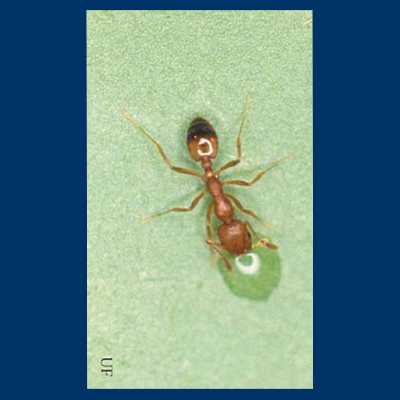
Pharaoh ants feed on sweets, oils and proteins. They will also eat other dead insects. Nests of these ants are usually located in inaccessible areas such as wall voids, behind baseboards, in furniture and under floors. They will use electrical and telephone wires to travel through walls and between floorboards. Outside, they can be found in shaded areas or under debris.
Crazy Ant
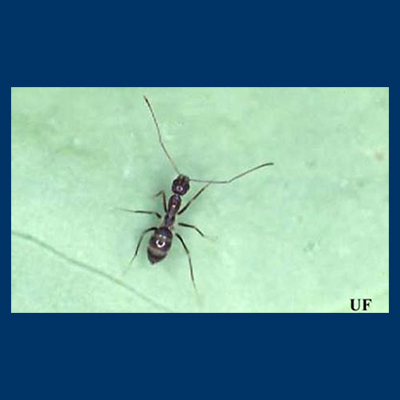
Crazy ants get their name from their erratic and rapid movement and the habit of not following trails like other species. They feed on live and dead insects, seeds, honeydew, fruits, plant exudates (fluid emitted through the roots of plants) and household foods. These ants will forage long distances away from their nests – making it hard to control populations. These ants often nest away from their foraging area. They can be found near trash, cavities in plants and trees, rotten woods and soil.
Ghost Ant
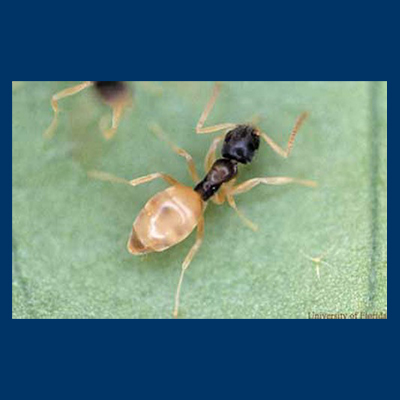
These ants get their name because they are hard to see due to their pale color and tiny size. They are a tropical species and are primarily found in Central and Southern Florida and Hawaii. Ghost ants like to nest in wall voids, behind baseboards, between cabinets and inside the soil of potted plants. You can find them trailing along carpet edges and areas with high moisture. When crushed, they give off a coconut-like odor.
Argentine Ant
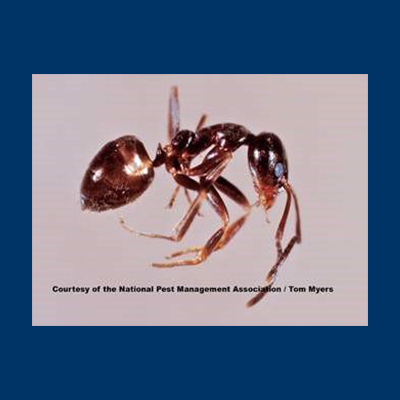
These ants prefer sweet foods but increase their intake in protein-rich foods during their peak reproductive months in the spring and summer. When the weather outside is too cold or dry, they will invade buildings in large numbers. Inside they nest near a source of moisture such as water pipes, sinks or potted plants. These ants are known to crawl over sewage, trash and dead animals; therefore they are capable of contamination.
Carpenter Ant
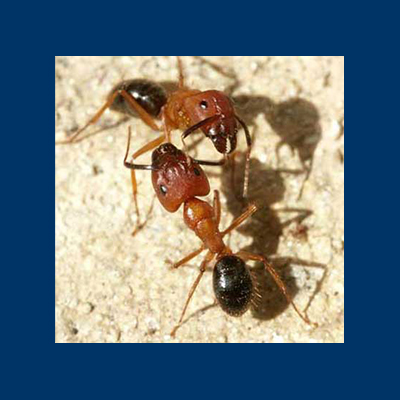
Carpenter ants primarily feed on insect honeydew, plant and fruit juices, insects and other arthropods. They DO NOT eat wood. These ants nest in wood sources that were previously wet or damaged by mold. They will excavate wood to build tunnels and create nests. Inside, these ants can nest in kitchens, bathrooms and other areas that may have water leaks. They can also nest in poorly ventilated attics and crawlspaces that have a humid environment.
Tips to Prevent Ants
Prevention is always the best thing to do to defend your home against any pest. One of the best ways that you can help prevent ants from coming inside is by keeping your home free of trash and keeping food in sealed containers.
Any type of food or food particles (crumbs, spilled juices, etc.), can attract and provide food for ants. Storing food in tightly sealed containers will help prevent ants from picking up on its scent. Immediately clean any spilled food or beverages. Frequently sweep and vacuum your floors – especially underneath appliances.
It’s not just doing things indoors that can help prevent ants. Outside you should remove piles of old lumber, firewood and debris as it can serve as a potential nesting site for ants.
We can all agree that ants are annoying, especially when they’re inside your home. Luckily, there are ways for you to prevent them. However, if you’re dealing with an infestation, it’s always best to call a pest control professional as they can provide elimination and preventive services.